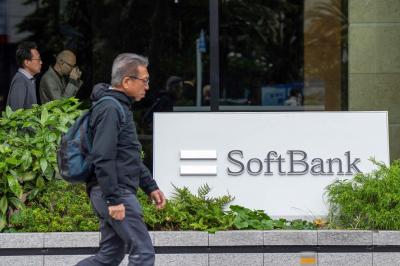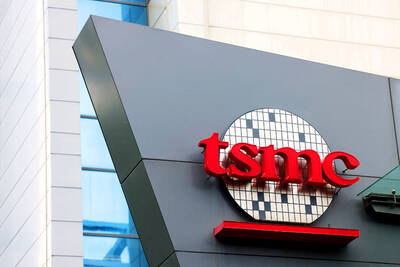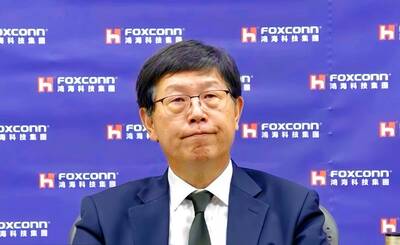A former electronics executive from Taiwan was charged on Tuesday with taking part in a global price-fixing conspiracy involving cathode ray tubes (CRTs), the US Justice Department said.
A federal grand jury in San Francisco indicted former Chunghwa Picture Tubes Ltd (中華映管) chairman and chief executive Lin Cheng-yuan (林鎮源) for allegedly fixing prices of CRTs used in computer monitors and televisions, the department said.
Lin, also known as CY Lin, was the first person charged in connection with an antitrust division investigation into the CRT industry.
He is already under indictment in connection with a price-fixing case involving Liquid Crystal Display (LCD) panels.
Lin, another former executive at Chunghwa and an executive of South Korea’s LG Display Co Ltd were indicted a week ago for allegedly taking part in a global conspiracy to fix prices of LCD panels.
In the latest indictment, the Justice Department accused Lin of “conspiring with others to suppress and eliminate competition by fixing prices, reducing output and allocating market shares” of color display tubes (CDTs) and color picture tubes (CPTs) between 1997 and 2003.
CDTs and CPTs are both types of CRTs. CDTs are used in computer monitors while CPTs are used in color TVs.
“This conspiracy harmed countless Americans who purchased computers and televisions using cathode ray tubes sold at fixed prices,” said Scott Hammond, acting assistant attorney general in the antitrust division.

Japanese technology giant Softbank Group Corp said Tuesday it has sold its stake in Nvidia Corp, raising US$5.8 billion to pour into other investments. It also reported its profit nearly tripled in the first half of this fiscal year from a year earlier. Tokyo-based Softbank said it sold the stake in Silicon Vally-based Nvidia last month, a move that reflects its shift in focus to OpenAI, owner of the artificial intelligence (AI) chatbot ChatGPT. Softbank reported its profit in the April-to-September period soared to about 2.5 trillion yen (about US$13 billion). Its sales for the six month period rose 7.7 percent year-on-year

CRESTING WAVE: Companies are still buying in, but the shivers in the market could be the first signs that the AI wave has peaked and the collapse is upon the world Taiwan Semiconductor Manufacturing Co (TSMC, 台積電) yesterday reported a new monthly record of NT$367.47 billion (US$11.85 billion) in consolidated sales for last month thanks to global demand for artificial intelligence (AI) applications. Last month’s figure represented 16.9 percent annual growth, the slowest pace since February last year. On a monthly basis, sales rose 11 percent. Cumulative sales in the first 10 months of the year grew 33.8 percent year-on-year to NT$3.13 trillion, a record for the same period in the company’s history. However, the slowing growth in monthly sales last month highlights uncertainty over the sustainability of the AI boom even as

AI BOOST: Next year, the cloud and networking product business is expected to remain a key revenue pillar for the company, Hon Hai chairman Young Liu said Manufacturing giant Hon Hai Precision Industry Co (鴻海精密) yesterday posted its best third-quarter profit in the company’s history, backed by strong demand for artificial intelligence (AI) servers. Net profit expanded 17 percent annually to NT$57.67 billion (US$1.86 billion) from NT$44.36 billion, the company said. On a quarterly basis, net profit soared 30 percent from NT$44.36 billion, it said. Hon Hai, which is Apple Inc’s primary iPhone assembler and makes servers powered by Nvidia Corp’s AI accelerators, said earnings per share expanded to NT$4.15 from NT$3.55 a year earlier and NT$3.19 in the second quarter. Gross margin improved to 6.35 percent,

FAULTs BELOW: Asia is particularly susceptible to anything unfortunate happening to the AI industry, with tech companies hugely responsible for its market strength The sudden slump in Asia’s technology shares last week has jolted investors, serving as a stark reminder that the world-beating rally in artificial intelligence (AI) and semiconductor stocks might be nearing a short-term crest. The region’s sharpest decline since April — triggered by a tech-led sell-off on Wall Street — has refocused attention on cracks beneath the surface: the rally’s narrow breadth, heavy reliance on retail traders, and growing uncertainty around the timing of US Federal Reserve interest-rate cuts. Last week’s “sell-off is a reminder that Asia’s market structure is just more vulnerable,” Saxo Markets chief investment strategist Charu Chanana said in